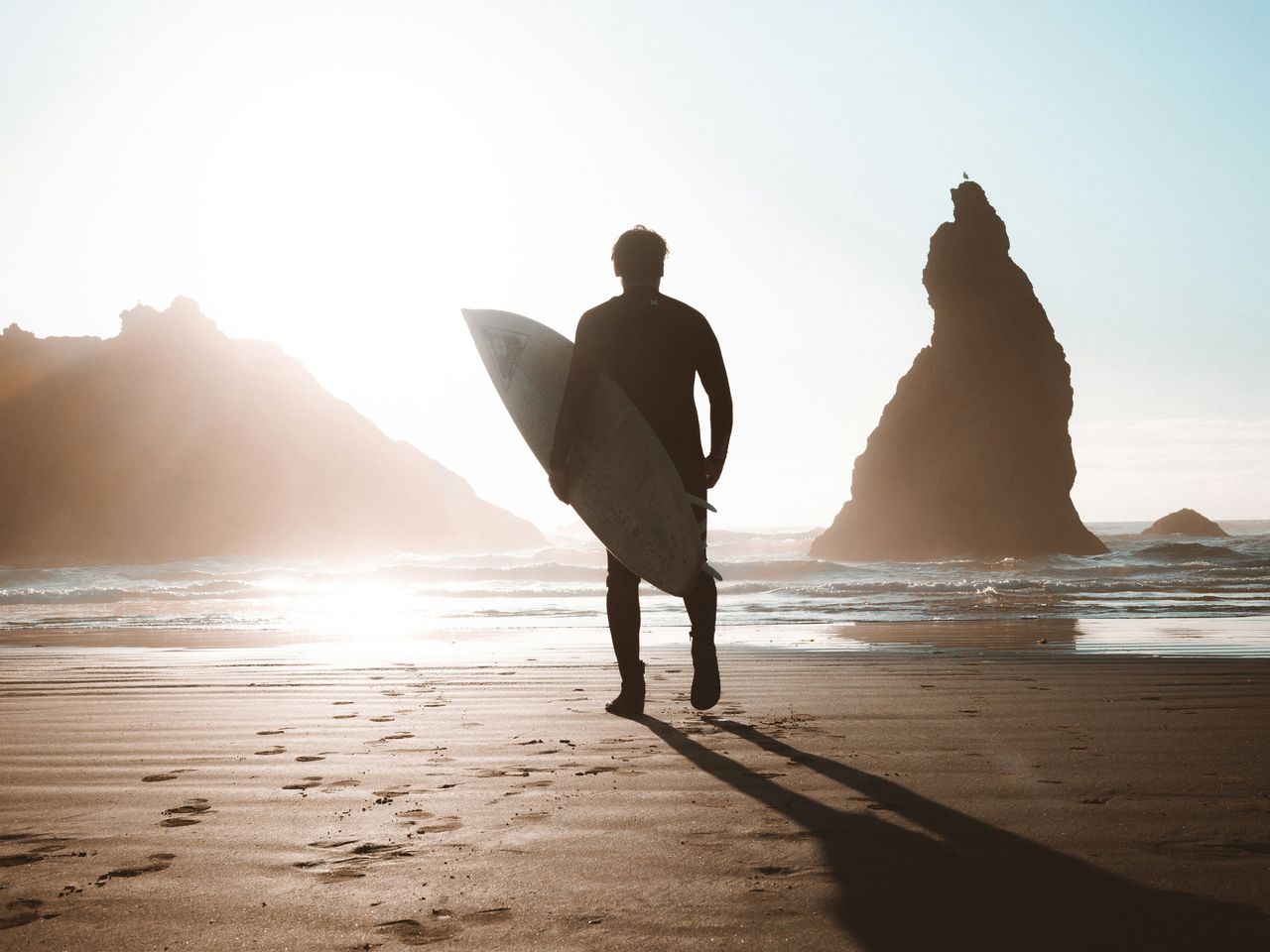
Surfing isn’t just a sport, it’s a calling. It’s about being in the right place at the right time to catch the perfect wave. But what are the perfect surfing conditions? Let’s break it down to the basics and help you find your perfect wave.
The best surfing typically occurs during a rising tide, which adds energy to waves. Most spots work well at mid-tide for optimal wave breaking. Sonuby Weather shows precise tide cycles and heights to time your session perfectly.
Offshore winds (land to sea) create ideal conditions with clean, well-formed waves. Light offshore winds (5 knots) or no wind are best. Sonuby's wind forecasts show direction and speed so you can identify optimal windows for surfing.
Ground swells travel long distances, creating consistent waves with longer periods (10-20 seconds). Wind swells are locally generated with shorter periods (under 10 seconds). Sonuby Weather distinguishes between these types to help you find quality waves.
A point break occurs when waves wrap around a point of land, creating longer rides as waves break progressively rather than all at once.
Beginners should start with 1-2 foot waves with gentle, spilling breaks on sandy-bottom beach breaks. Sonuby Weather's color-coded wave height maps help locate beginner-friendly conditions at local beaches.
Focus on wave height, period (seconds between waves), swell direction, wind direction/speed, and tides. Longer periods (12+ seconds) indicate quality waves. Sonuby Weather combines these elements in visual charts for easy interpretation.
24°C+ (75°F+): No wetsuit; 21-24°C (70-75°F): 1-2mm top; 18-21°C (65-70°F): 2mm full suit; 15-18°C (60-65°F): 3/2mm wetsuit; 13-15°C (55-60°F): 4/3mm with boots; Below 13°C (55°F): 5/4mm with boots/gloves/hood. Sonuby provides accurate water temperatures to help choose the right wetsuit.
A surf spot works when swell direction/size, wind conditions, tide height, and swell period align with the location's underwater topography.
Beach breaks form over sand (more forgiving), reef breaks over coral/rock (more consistent), and point breaks wrap around land points (longer rides).
Forecasts are most reliable 1-3 days ahead, with 4-7 days providing general guidance. Sonuby Weather offers hourly, 7-day forecasts with regular updates for both immediate planning and trend information.
Sonuby Weather is specifically designed for surfers, offering detailed wave, tide, and wind forecasts that standard weather apps don't provide. It displays swell period, direction, and height alongside water temperature and ocean currents—crucial information for finding perfect waves.
Anyone who’s spent considerable time in the ocean knows that the tide is a really important factor in how waves are formed. At high tide, the waves hit further up the beach whereas at low tide the incoming water doesn’t go as far.
The effect of high and low tide is dependent on where the break point of the beach is, meaning the location where the waves start creating crashing peaks. As a general rule, it’s best to surf when the tide is coming in, which is thought to give a bit more energy to incoming waves as a tidal push. [1]
When the tide is fully in or fully out, as opposed to rising or lowering, the underlying water doesn’t have direction (it’s not pushing up the beach or dropping down). This is known as a slack tide. Some surfers feel like this causes a swampy feeling where the waves break onto water instead of onto the underlying topography of the beach, which makes the waves have less energy. [1]
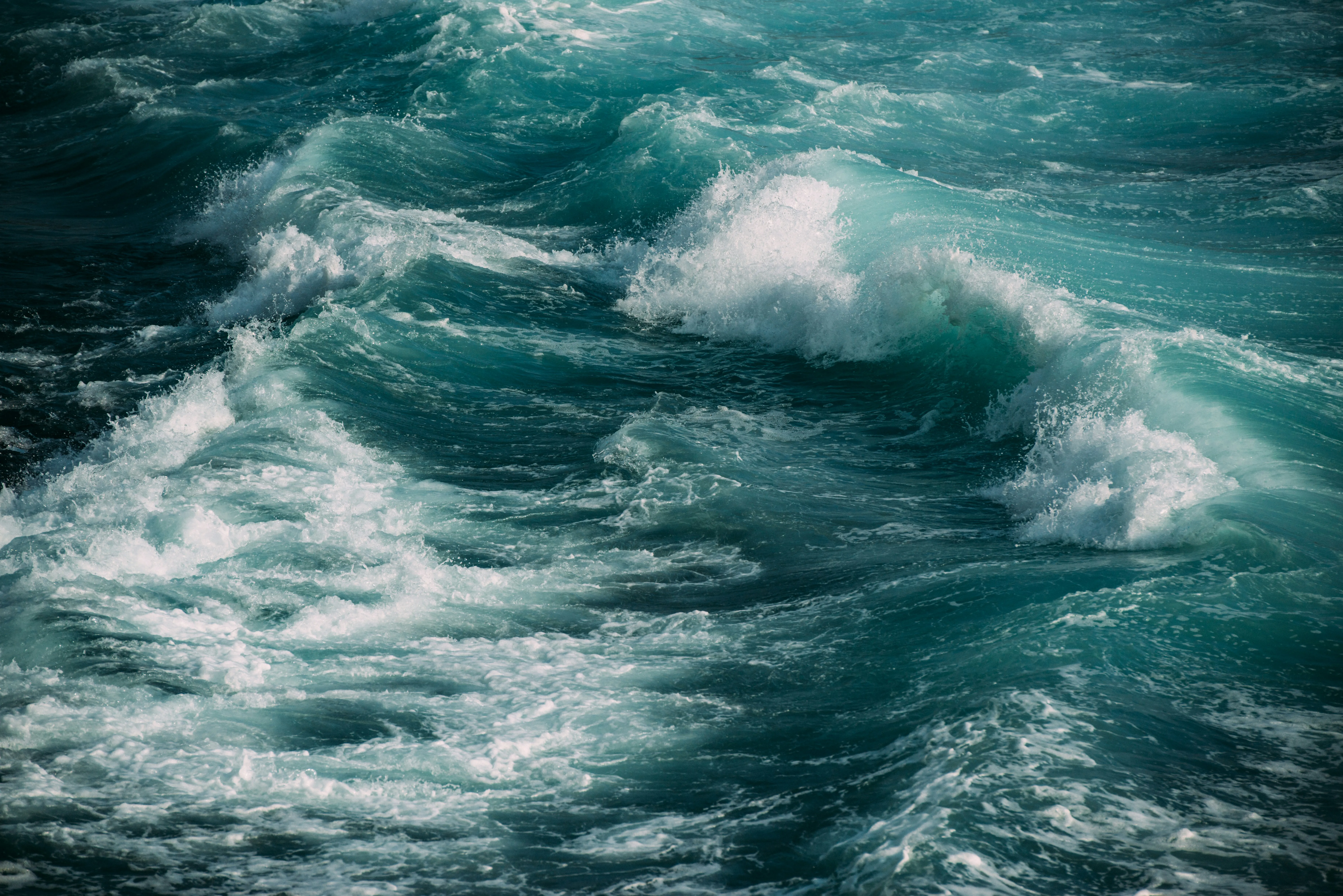 Certainly not the best weather for surfing - lots of wind waves with potentially strong currents.
Certainly not the best weather for surfing - lots of wind waves with potentially strong currents.
Photo by Blake Wisz
The wind is an important factor for creating a good surfing experience. Generally, surfers talk about wind as either “onshore,” where the wind is blowing towards the shore from the ocean, or “offshore,” where the wind is blowing from the land out to sea. [2]
The best wind conditions are light offshore winds at about 5 knots, or no wind at all. This is because the wind conditions can change the waves, creating bumpy, choppy waves that are hard to surf on. [3]
If there is wind, the offshore direction is best for surfing as it pushes the wave face back into the wave, slowing it down, causing it to break later up the beach, and creating a good surface for surfers. [2]
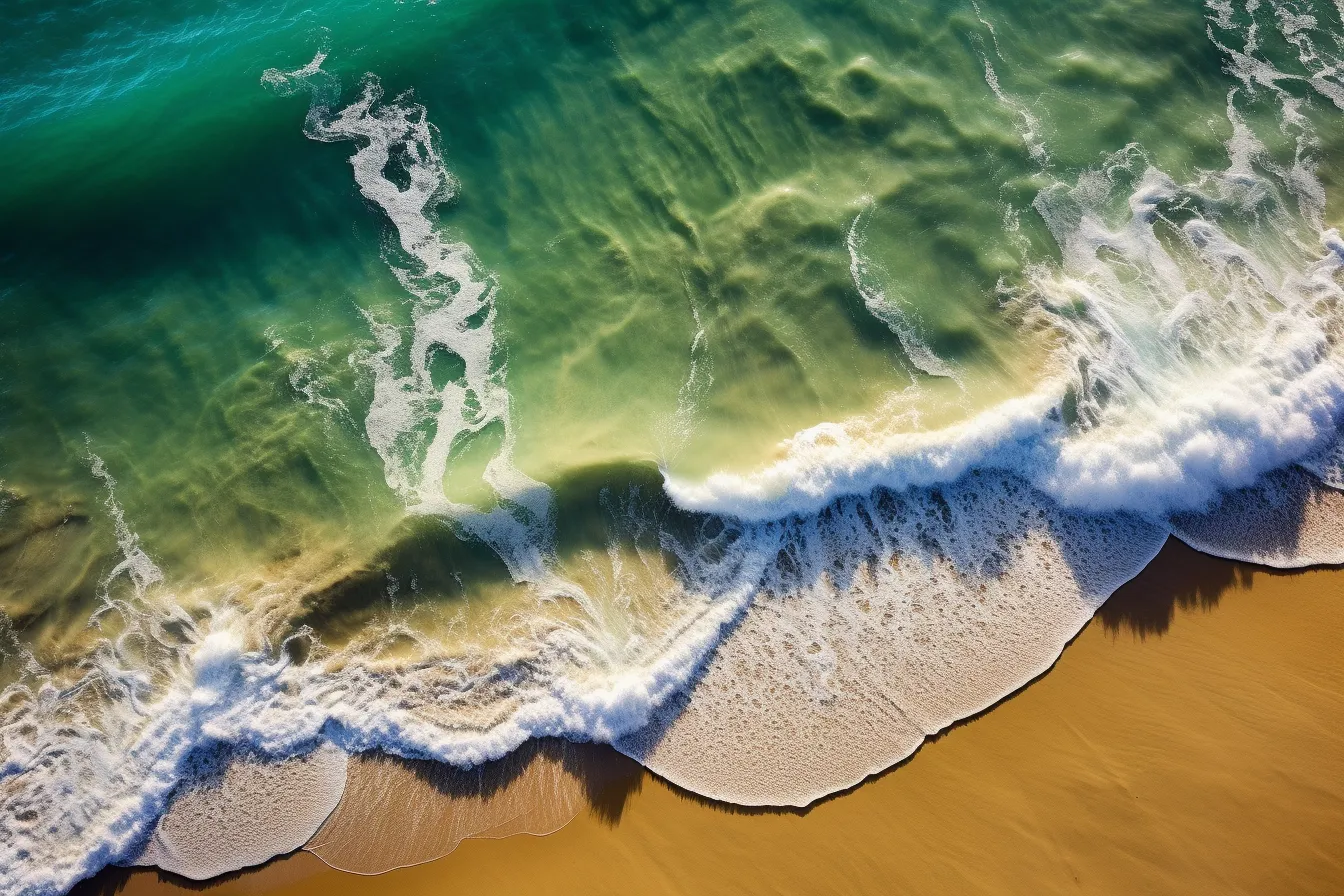 Swell waves are created far away and are ideal for surfing.
Swell waves are created far away and are ideal for surfing.
Swell is what waves are before they reach the beach. A swell period is the length of time in seconds between two waves, and can range from less than 10 seconds to over 14 seconds. [4]
Swells can come from multiple sources. Swells that come from far out in the ocean are called ground swells and tend to have longer swell periods. Wind swells are caused by local winds and tend to have shorter swell periods. [4]
The swell period has a strong impact on the quality of the wave, with shorter swell periods creating short, peaky, and weak waves. Ground swells tend to have longer waves with more energy and produce bigger waves. [4]
Ground swells are thus the best for surfing. Wind swells can have much more variability in speed and direction and are generally not well suited for surfing. However, each location has different topography that may work with the swells differently, so it’s best to know whether ground swells or wind swells work best for your given location.
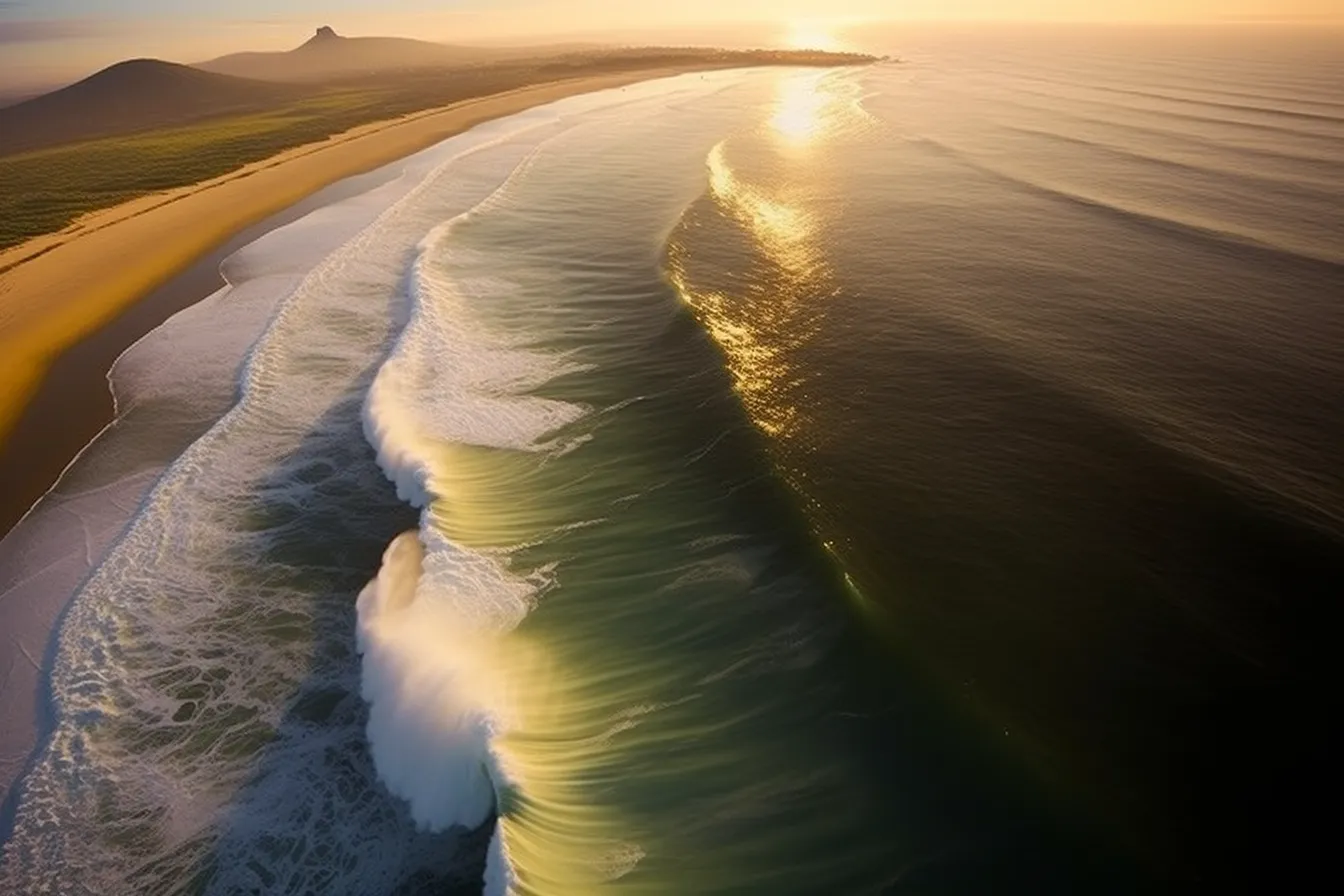 A point break shore line creating ideal surfing waves.
A point break shore line creating ideal surfing waves.
Probably the most important factor in surfing to understand is what kind of break your spot has. A break is where the wave breaks and forms the cresting white waves we all know and love. [5]
However, how this happens is dependent on the topography of your surf spot. For instance, a surfing beach in a natural harbor with a peninsula causing the waves to wrap around and travel at an angle to the beach will be called point break. [5]
This is often thought of as the best kind of break, and beaches with points are often well renowned for their surfing opportunities. This is mostly because the waves travel at an angle to the beach, allowing the break to travel down the wave, rather than cresting all at once. [5]
A similar kind of break can also be achieved when coral reefs are found a little out from the beach. These can also cause the break to happen earlier, allowing the waves to have more energy, although it’s not a guarantee that they’ll have the same traveling break as a point break. [5]
Beach breaks are the least exciting form of break, and occur when waves break directly on the beach. This means that the break location is dependent entirely on the sand underneath the waves. These waves can be less predictable, shorter, and have less energy. The waves also break perpendicular to the shore, so they break all at once, which doesn’t make for the best ride. [5]
The movie “Point Break” is named after the type of break on the beach.
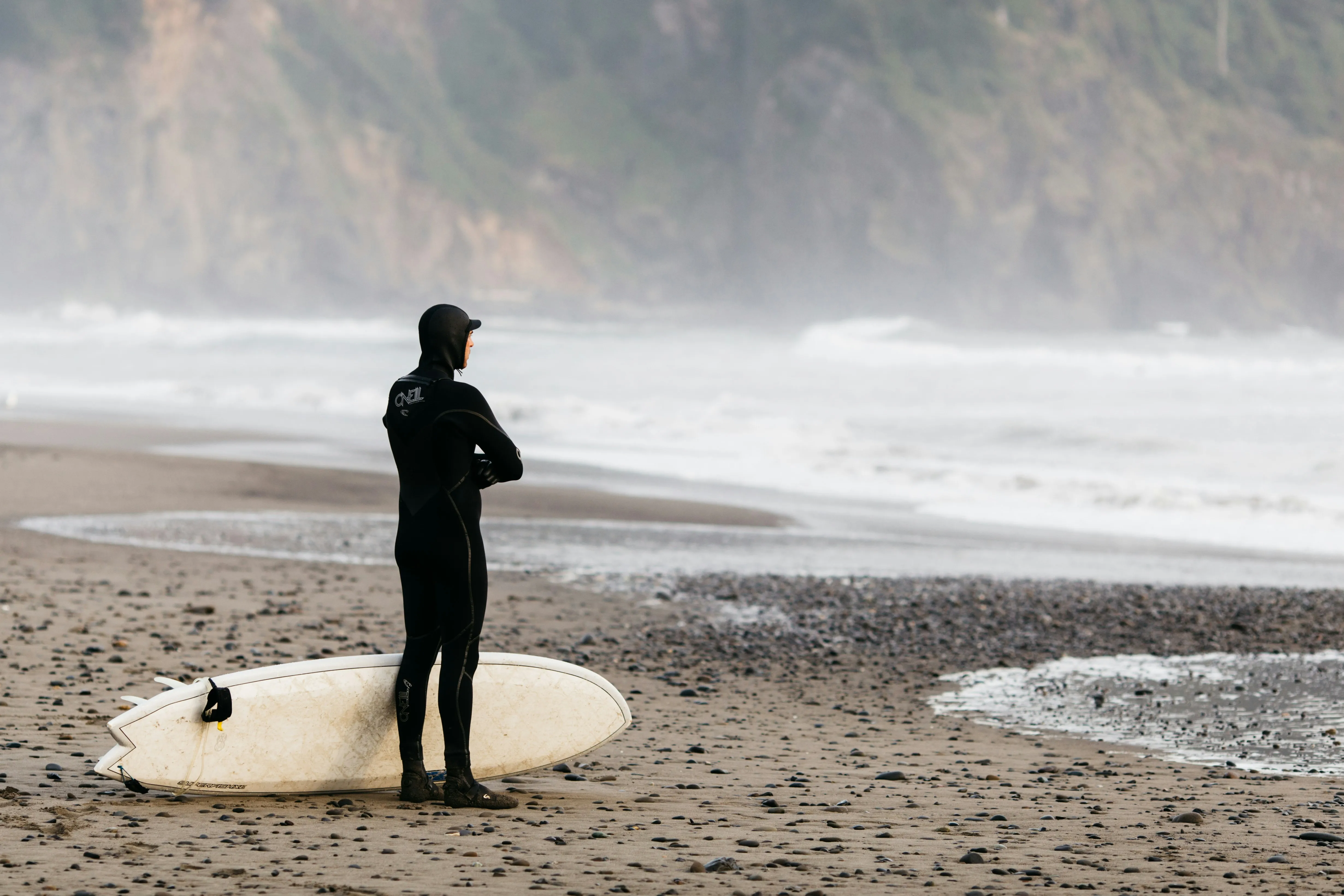
Photo by Patrick Fore
Surfing is great fun, but constant exposure to the cold can ultimately lead to discomfort, shivering, and even hypothermia. This is especially true when surfing with winds as the water increases the wind chill.
Choosing the right wetsuit is thus crucial as you need to select one that’s suitable for the temperature and climate of your local surf spot. The best course of action would be to talk to local surf instructors about the wetsuits they recommend and wear one that keeps you warm enough in winter.

See real-time surf conditions including wave height, period, wind speed, and upcoming weather forecast all in one view.
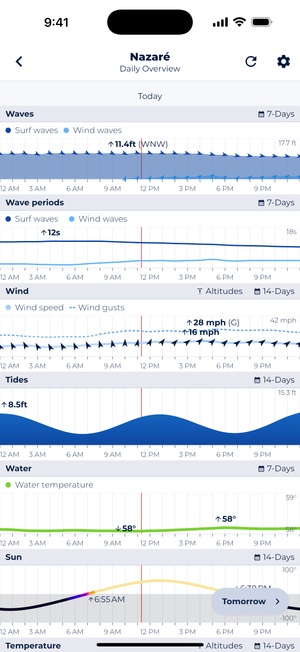
Track hourly changes in wave height, periods, wind conditions, tides, and water temperature to plan your perfect surf session.
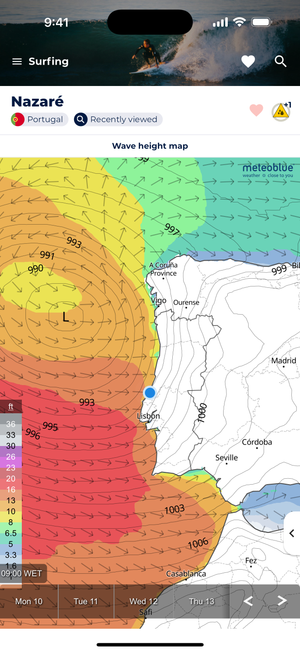
Visualize wave heights with color-coded maps showing where the biggest waves are forming and their direction.
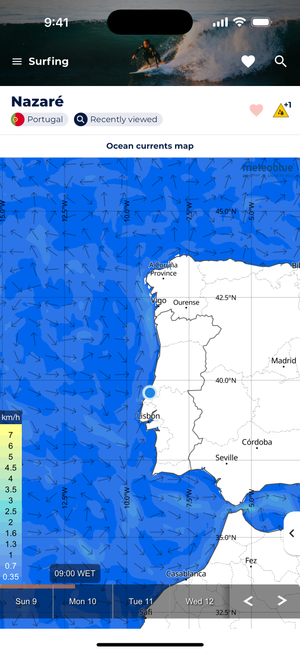
Identify ocean current patterns and speeds to better understand how they’ll affect your surfing spot.
With all these complicated factors influencing the waves during your surf session, you may be a bit overwhelmed at the idea of having to find the best surf spot and time using regular weather forecasts.
Sonuby takes all the hassle out of forecasting ideal surfing conditions by offering a tailored Surfing Weather Report. It provides important variables such as wave heights, period, direction, tidal information and water temperature for every coast in the world in a nice, easy to read way.
Forecasts are available as hourly, daily, or weekly predictions, and in various formats such as meteograms and and weather maps, giving you a better idea of the conditions at and around your chosen location.
For more details, check out Sonuby’s Surfing Report.
Resources:
[1] www.surfline.com
[3] surflearner.com
[5] houseofsurf.co